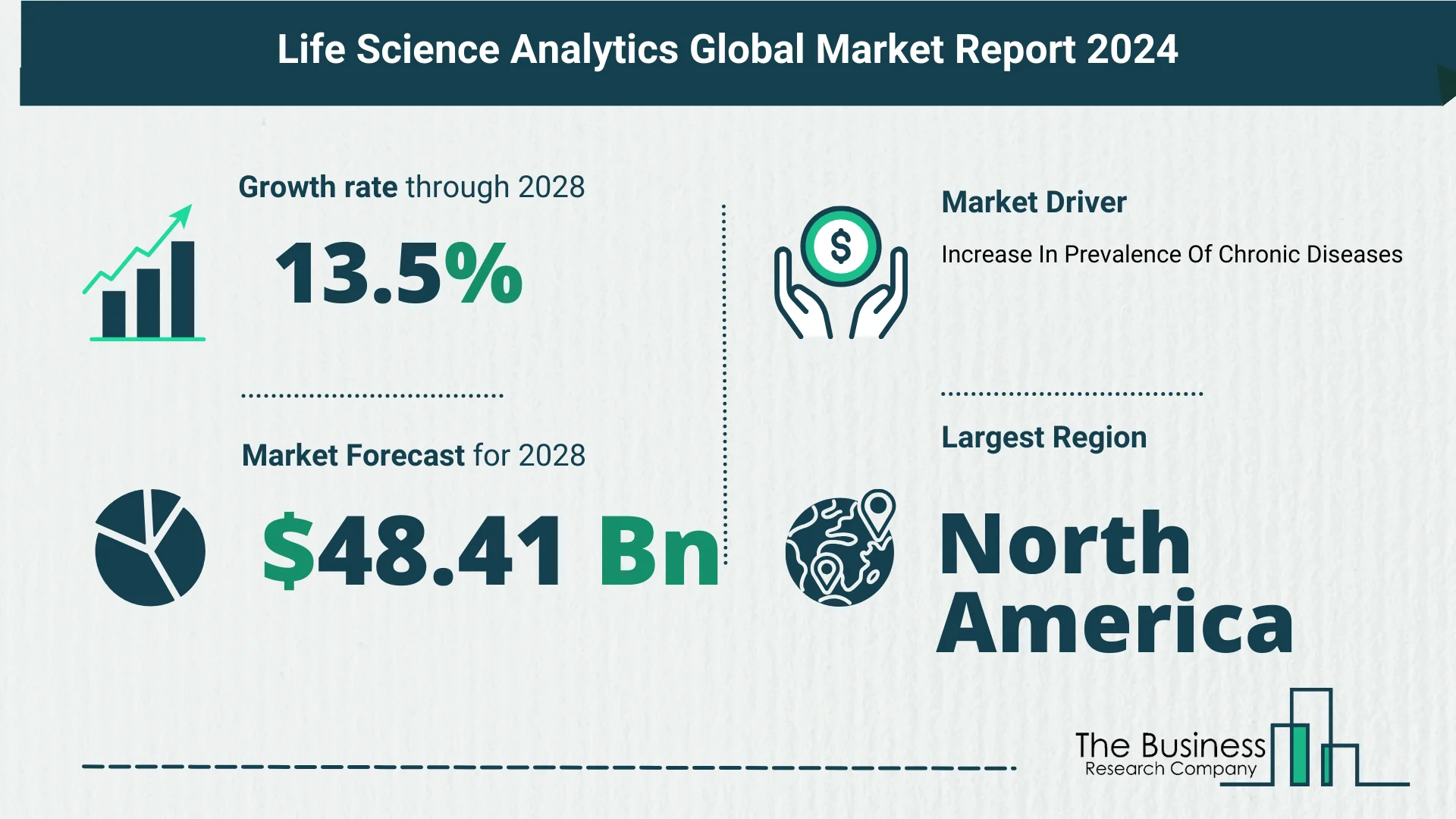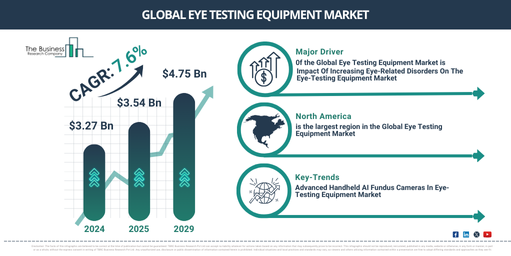Key Trends And Drivers In The Life Science Analytics Market 2024
The Business Research Company’s market reports offer an in-depth analysis on the market’s growth potential, major drivers, key trends and more.
The life science analytics market has witnessed a remarkable surge in recent years, expanding from $26.2 billion in 2023 to $29.2 billion in 2024, boasting a Compound Annual Growth Rate (CAGR) of 11.5%. This growth, attributed to various factors, is projected to continue its upward trajectory, reaching $48.41 billion by 2028 with a CAGR of 13.5%. Key drivers in this growth include pharmaceutical sales and marketing, healthcare cost reduction, global health preparedness, biopharmaceutical manufacturing, and the adoption of digital health.
Navigating the Growth Drivers
- Chronic Disease Surge
The escalating prevalence of chronic diseases is a pivotal factor propelling the life science analytics market. With diseases persisting over an extended period, analytics, especially predictive analytics, becomes instrumental in early detection and intervention. For instance, the International Diabetes Federation reported a staggering 537 million adults living with diabetes in 2021, a number projected to rise to 643 million by 2030 and 783 million by 2045. This underscores the crucial role of analytics in addressing the challenges posed by chronic diseases.
- Technological Leaps
Technological advancements stand out as a driving force in the life science analytics sector. Key market players are actively engaged in developing cutting-edge solutions to fortify their positions. Notable among these is Charles River Associates, which introduced the Healthcare Claims Analytics Platform (HCAP) in July 2022. HCAP, a dynamic data visualization tool, streamlines the analysis of patient, healthcare practitioner, and healthcare organization data, facilitating informed decision-making.
- Strategic Acquisitions
In a strategic move to enhance capabilities, Trinity Life Sciences acquired D Cube Analytics in July 2022. This acquisition brings extensive data science and digital transformation capabilities into Trinity’s portfolio. D Cube Analytics, based in Illinois, adds a layer of sophistication to Trinity’s offerings, contributing to the overall growth and competitiveness of the life science analytics market.
Segmenting the Market Landscape
- Classification by Type
The life science analytics market is categorized into Descriptive Analytics, Predictive Analytics, and Prescriptive Analytics. Each type plays a distinct role in providing insights and aiding decision-making processes.
- Component Breakdown
Breaking down components, the market comprises Software and Services. The synergy between these components is crucial in delivering comprehensive analytics solutions.
- Deployment Modes
Analyzing deployment modes, the market offers choices between On-Demand and On-Premises options, catering to the diverse needs of end-users.
- Application Scope
The applications span across Research and Development, Preclinical Trials, Clinical Trials, Sales and Marketing, Regulatory Compliance, Supply Chain Optimization, and Pharmacovigilance, showcasing the versatility of life science analytics.
- End User Landscape
Finally, the end-user landscape covers Medical Device, Pharmaceutical, Biotechnology, and Other End Users, indicating the broad spectrum of industries benefitting from life science analytics.
Read More On The Life Science Analytics Market Report 2024 – https://www.thebusinessresearchcompany.com/report/life-science-analytics-global-market-report
Regional Dynamics
North America’s Dominance
In 2023, North America emerged as the largest region in the life science analytics market. However, the spotlight is shifting towards Asia-Pacific, anticipated to be the fastest-growing region in the forecast period. This shift reflects the global nature of the market, with diverse regions actively participating in the evolution and expansion of life science analytics.
Looking Ahead: Future Trends
- AI-Enhanced Drug Safety
The integration of artificial intelligence in drug safety is a prominent trend. This not only enhances safety protocols but also streamlines processes, contributing to the overall efficiency of life science analytics.
- Predictive Analytics in Diagnostics
Predictive analytics is increasingly becoming a vital tool in diagnostics, enabling healthcare professionals to foresee potential health issues and take preventive measures.
- Gene Editing Advancements
Advancements in gene editing technologies are influencing the life science analytics landscape, opening new avenues for precision medicine and targeted therapies.
- Data Visualization Tools
The importance of data visualization tools is on the rise, simplifying complex information and making it more accessible for decision-makers.
- Blockchain for Data Security
Blockchain technology is gaining traction in ensuring the security and integrity of data in the life science analytics domain.
In conclusion, the life science analytics market is on an upward trajectory, fueled by a confluence of factors including technological advancements, strategic acquisitions, and the imperative need to address the rising tide of chronic diseases. As the market continues to evolve, staying attuned to emerging trends and regional dynamics will be key for stakeholders aiming to navigate and capitalize on this dynamic landscape.
Request for A Sample Of The Global Life Science Analytics Market Report:
https://www.thebusinessresearchcompany.com/sample_request?id=6581&type=smp



